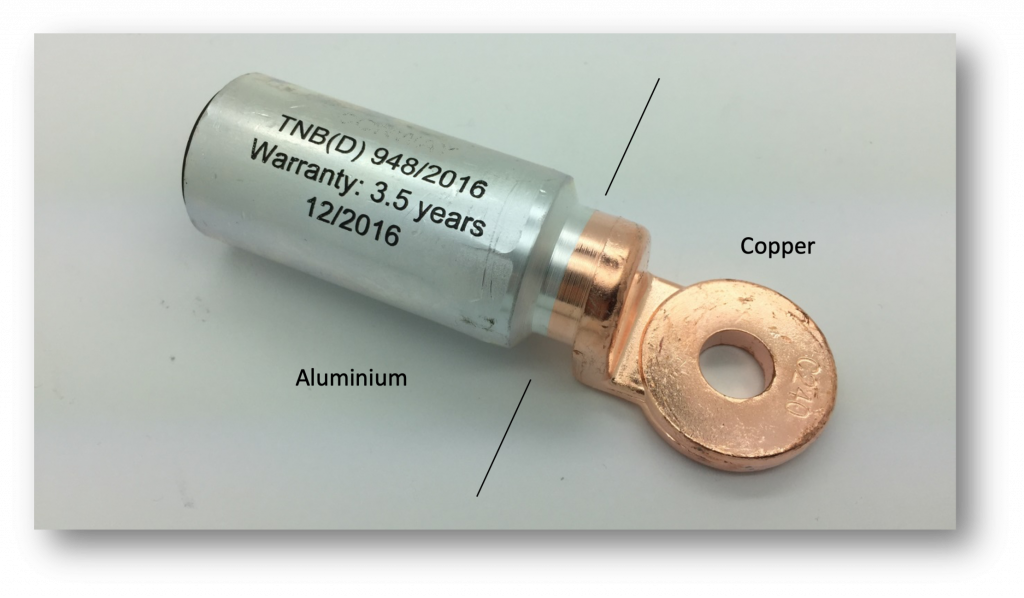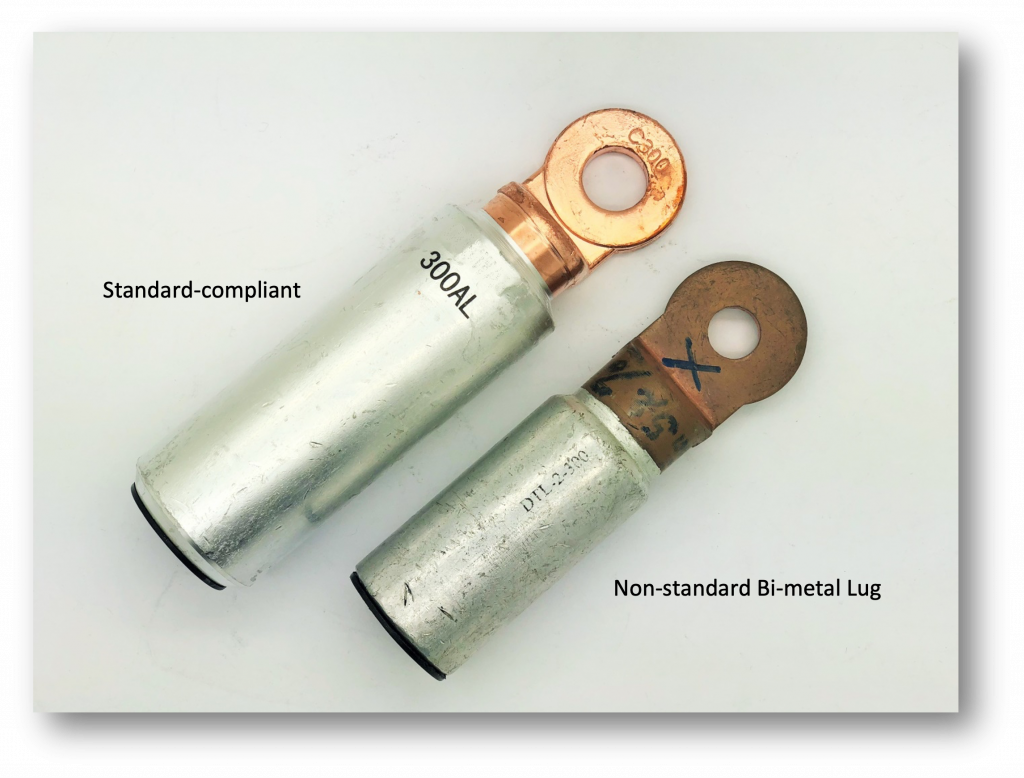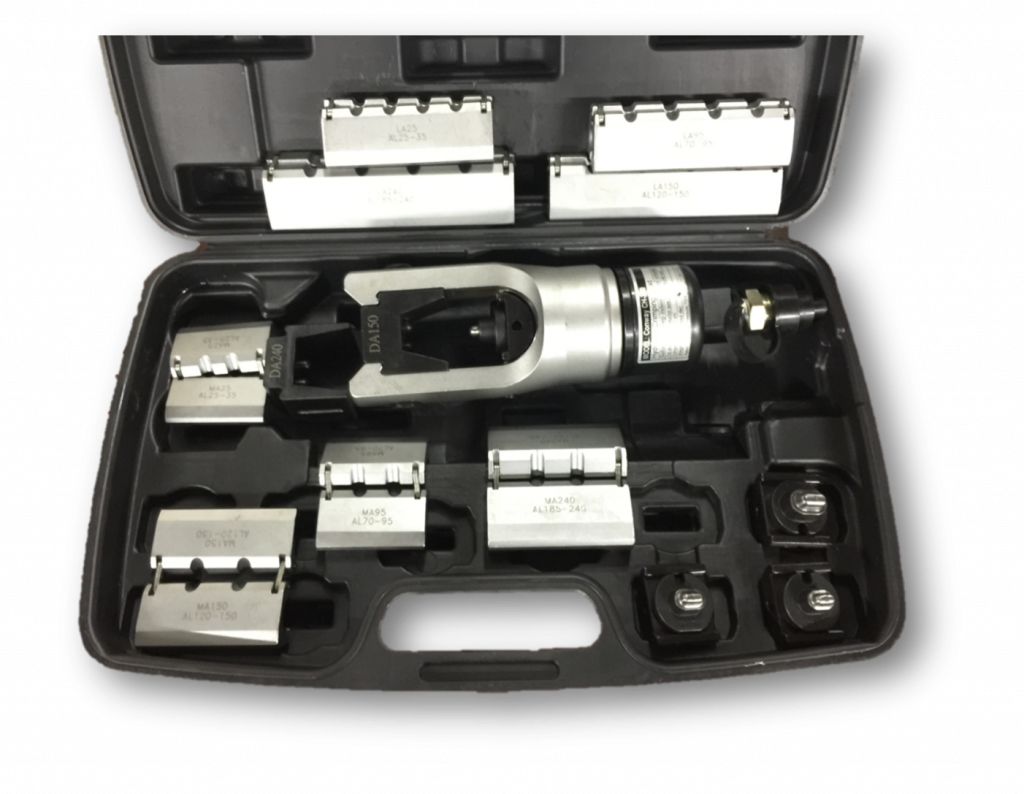What is a Good Electrical Connection?
A good electrical connection is one that is able to conduct current safely at a low temperature, resulting in energy saving. It should also be able to last for many years (up to 30 years or even longer).
A bad electrical connection on the other hand conducts current poorly at higher temperature, creating heat loss and even risk of fire. For a building that consists of many joints and terminations, every connection’s heat loss adds up. Even if each connection were to lose a few Watts, the lost multiples by many numbers of connections, over a period of 24 hours for 365 days in a year will equate to a big heat loss and wastage.
Aluminium Conductor as an alternative to Copper
When it comes to conductivity, Aluminium is the best alternative to Copper in terms of commercial value and engineering properties. Compare to Copper, the specific gravity of Aluminium is only a third but its electrical conductivity is up to 60% of Copper. Aluminium is also about 70% cheaper than Copper. Due to its light weight and low cost relatively, Aluminium conductors are widely used in electrical projects today.
However, Aluminium that comes in contact with Copper can cause corrosion in a short span of time resulting in a damaged contact. Since Aluminium and Copper have different electrical potential and expansion ratio, the hot and cold cycle with exposure to air will increase resistance and corrode the contact. This phenomenon is known as the coupling effect, or galvanizing.
In the absence of proper connectors, many Aluminium conductors that were installed in the early days have been found to break down after a short period of operation. This has caused the consultant engineers, contractors and owners to shy away from using Aluminium conductors, making it less popular to be used for indoor electrical wiring.
Bi-metal Cable Lugs and Links
This however has changed with the invention of friction welding type Bi-metal lugs and links from Europe, which are now widely used. The Bi-metal lug is today the best solution to solve the contact problem between Aluminium and Copper. Tenaga Nasional Berhad (TNB) has been using Aluminium cables and Bi-metal lugs for the last 20 years without any problem. This proves that Aluminium conductors are equally good and reliable as Copper conductors.

A Standard-compliant Bi-metal Lug
In the International market, quality Bi-metal lugs and links are mainly produced from Europe, with the most outstanding product coming from France. Its governing standard is the HN 68-S-90 titled “Connection of Aluminium Conductor Insulated Cables by Deep Indentation”. This standard covers the specification of materials, dimension of connectors, friction welding area, crimping method and die, type test and acceptance test. It is today recognized and used internationally.
Equally important is the IEC testing standard, IEC 61238-1 titled “Compression and Mechanical Connectors for Power Cable for Rated Voltages up to 30kV”, which is also widely accepted. TNB also adopts both the above standards and accepts the type test. Therefore a Bi-metal lug that is in compliance to the above standards and type test can be accepted for electrical projects that uses Aluminium cables.
The fabrication of Bi-metal lugs involves Aluminium and Copper being fused together in a process called friction welding. This is done by spinning Aluminium and Copper on a machine to allow the metals to rub against each other to produce high heat. During this stage, a strong force is applied to weld the two metals together. A good quality friction welding has the two metal surfaces sealed perfectly without any air gaps, which will prevent corrosion on the contact. A good and sufficient welding area also contributes to good conductivity and mechanical strength of the connection. It is easy to understand the manufacturing processes, but the actual production of Bi-metal connectors is a complicated process, which requires the latest advancement in machinery technology, technical skill and know-how with proper quality control in place.
Malaysian Standard for Bi-metal Lugs
To cater for the application of Bi-metal cable lugs on Aluminium cables, Standards Malaysia in collaboration with TEEAM as a Standards Writing Organization (SWO) has since developed the MS 2584:2014 – Specification for the Material, Marking, Dimensions and Type Test Crimp type Copper Aluminium Bi-metal lugs for use with XLPE insulated and compact Aluminium Conductors in single and multi-core Power Cables applications up to 36 kV.
Currently Bi-metal lugs type-tested to IEC 61238-1 and in compliance to MS 2584:2014 with matching tools and dies are available in Malaysia and commonly used in electrical projects. However many sub-standard Bi-metal lugs are also imported into Malaysia. These non-compliant lugs do not match the specification and dies for standard-compliant lugs. They are usually small in size and fabricated poorly resulting in temperature rise in the area of connections. Using these lugs will result in heat loss, energy waste and fire risk.

Comparison between a Standard-compliant and Sub-standard 300mm2 Bi-metal Lug
In order to achieve good connections for Aluminium Cables, it is important to specify and use Bi-metal lugs that are type-tested to IEC 61238-1 or MS 2584:2014. In any termination or jointing of connectors, the selection of matching tool and die are equally as important in order to achieve the perfect connection. For Aluminium cable connections, indent dies are commonly used. The tools are mainly hand operated hydraulic tools, but the electric pump is also popular for fast and easy operation.

Indenting Tool and Container Dies for Bi-metal Lugs
Lastly, human factor is equally as important in achieving a good electrical connection. It is vital that wiremen and electricians be willing to work according to manufacturer’s instructions. For bigger connectors, crimping should be done more than once, or according to manufacturer’s instruction. In Malaysia, tools with standard-compliant dies are now easily available. Therefore, when the right connectors and tools are used and work is carried out in compliance to procedure, good connections can be easily achieved.